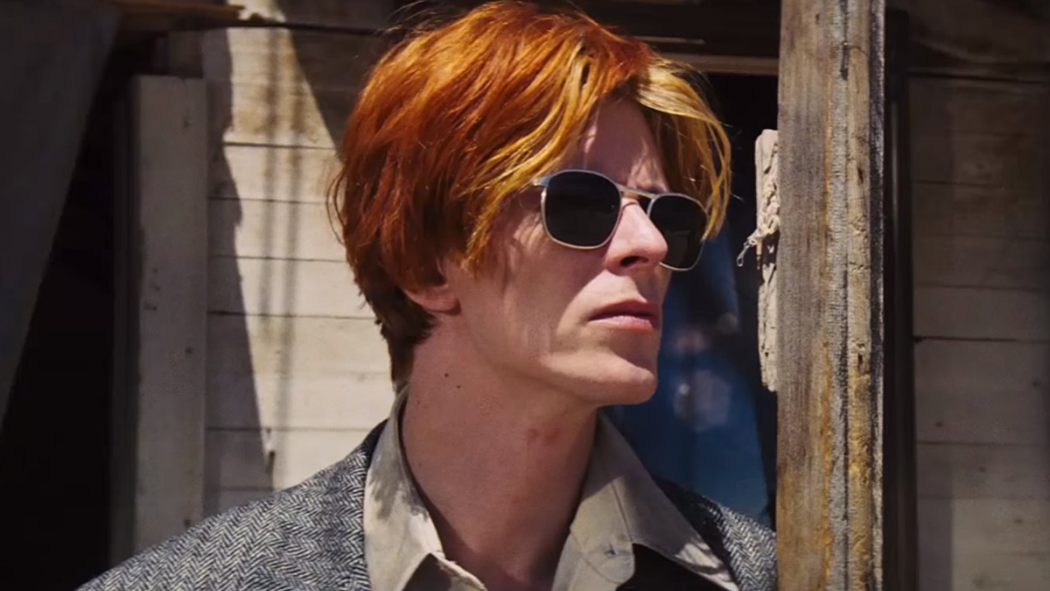Review: The Man Who Fell To Earth – 4k Restoration

At the lights off of the Eighties, I made several unannounced trips to another world. I wanted to find change and offer love, and bring some of my naivety to a world I'd only read about. Excluded from a universe I'd grown up in, I found further rejection in a second sphere. Crushed and skint, dark hours were enlightened by an optical optimism in a stucco cathedral, just yards from my landing point. From a dark and carcinogenic stall, I observed a fellow alien. Glowing and gallant and vibrant in orange, he faintly stumbled and fell down the slag of life. Drunk on his arrival, disorientated and detached. The teenage me was smitten. London and The Scala Cinema watered the drought of My Barren North.
Thirty tears later this stranger remembered the brightly lit darkness that revealed more to the Pierrot mannequin of David Bowie. “The Man Who Fell To Earth” has been restored and given a 4K lustrous sheen. Director Nicholas Roeg, bank-rolled on the reception of “Don’t Look Now” revisited the open vistas of the notorious “Walkabout”. In this xenophobic science-faction setting those lost and abandoned spaces seem more peculiar. Juxtaposed to urbanity, and therefore more surreal and reminiscent.
Bowie IS Mr. Newton. It could be said that his acting abilities are limited in this film, but that would be unfair. The superb casting allows him to sit easily in the skin of the alien, jettisoned to Earth on an extra-terrestrial humanitarian exploration. He is a Starman.

Based on the novel by Walter Tevis, Paul Mayersberg’s social and economic narrative easily predates our current stance on refugees and protecting our borders and our markets. It also highlights how cultural differences, often born from nurture or even advertising pressures, can alienate those whose belief systems are radically disconnected with their own. Newton succumbs, changing from a thoughtful, determined and faithful devotee into a contorted and bedevilled bed fellow of consumerism and it’s free pouring disposable opiates.
The restoration of the original print was overseen by both Roeg and cinematographer Anthony Richmond. The visuals were always impressively stratospheric, particularly in the location pieces. What has been given a notable prominence is the heightened colour palette and the mesmerising solar flares from the camera lens, which now seem to refract with further intensity. Echoing kaleidoscopic glares repeat into infinity, and capture an imagined distant planetary home of Newton’s, subliminal in its detail.
Bowie withdrew his original intention to provide the soundtrack to the film, later rumoured to form part of ‘Station To Station’. John Phillips from the Mamas & Papas music, however converse it may have been, is a dizzying collection of original electronic scores, country rock and US radio classics. On this cinema release, they bristled, fizzed and engaged, the individual craft of musicians including Stomu Yamash'ta and The Stones' Mick Taylor suitably supporting the enhanced visual experience.
Two hours later, I was reminded of the emotional impact my youthful viewings of this cult flick had on me. Unfortunately, this time it cut deeper and angrier. In the post-Brexit constituencies across the UK, and the TTIP led global capitalisation that deters and defies our global warming concerns, it resonates further. The film becomes a disorientating dystopic on the decline of democracy under capitalism, cataclysmic in capturing the radicalisation of environmental concern.
The Man Who Fell To Earth – 4K Restoration is in selected cinemas now, with a special Q&A event on 18th September at the BFI Southbank, London.
Special edition Blu-ray and DVD reissues are out on 24th October 2016.






















